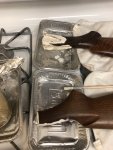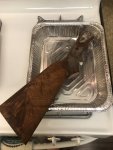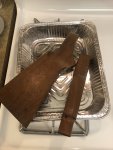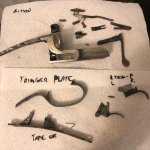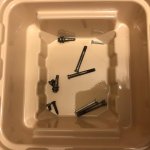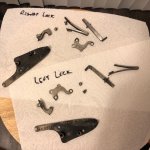One of the guns I inherited from my grandad is a 1930 LC Smith side-by-side (originally his father’s). The wood is mostly in good shape, and the finish is nearly pristine. I’d like to keep it that way when I use it for doves every year, in part because I think one of the best ways to honor them is to use their tools to do what they loved.
The consensus for Elsies seems to be to do the following:
(The waiting list for gunsmiths who do a lot of L.C. Smith work is very very long, and that crowd isn’t getting younger, so I’d like to learn to do my own work.)
The consensus for Elsies seems to be to do the following:
- Get all of the oil out of the wood in the inlet
- Wick superglue into any cracks and gently clamp the cracks closed
- Bed the action and locks (so they still fit) to the stock with acraglass gel, reinforcing any cracks with staples suturing across then
(The waiting list for gunsmiths who do a lot of L.C. Smith work is very very long, and that crowd isn’t getting younger, so I’d like to learn to do my own work.)



